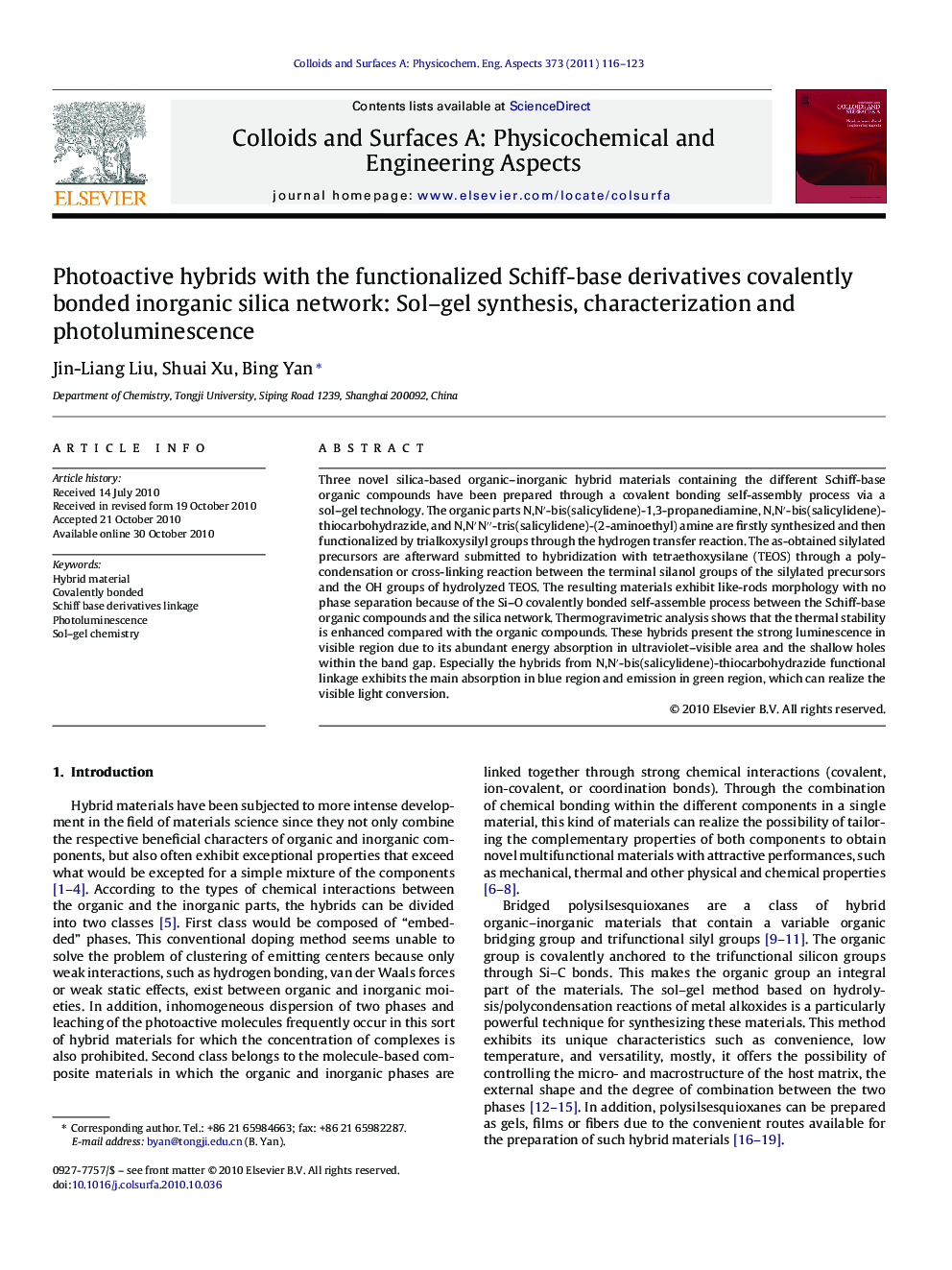| Article ID | Journal | Published Year | Pages | File Type |
|---|---|---|---|---|
| 595094 | Colloids and Surfaces A: Physicochemical and Engineering Aspects | 2011 | 8 Pages |
Three novel silica-based organic–inorganic hybrid materials containing the different Schiff-base organic compounds have been prepared through a covalent bonding self-assembly process via a sol–gel technology. The organic parts N,N′-bis(salicylidene)-1,3-propanediamine, N,N′-bis(salicylidene)-thiocarbohydrazide, and N,N′N′′-tris(salicylidene)-(2-aminoethyl) amine are firstly synthesized and then functionalized by trialkoxysilyl groups through the hydrogen transfer reaction. The as-obtained silylated precursors are afterward submitted to hybridization with tetraethoxysilane (TEOS) through a polycondensation or cross-linking reaction between the terminal silanol groups of the silylated precursors and the OH groups of hydrolyzed TEOS. The resulting materials exhibit like-rods morphology with no phase separation because of the Si–O covalently bonded self-assemble process between the Schiff-base organic compounds and the silica network. Thermogravimetric analysis shows that the thermal stability is enhanced compared with the organic compounds. These hybrids present the strong luminescence in visible region due to its abundant energy absorption in ultraviolet–visible area and the shallow holes within the band gap. Especially the hybrids from N,N′-bis(salicylidene)-thiocarbohydrazide functional linkage exhibits the main absorption in blue region and emission in green region, which can realize the visible light conversion.
Graphical abstractFigure optionsDownload full-size imageDownload as PowerPoint slideResearch highlights▶ Novel linkages of the functionalized Schiff-base compounds. ▶ New inorganic/organic hybrids assembled through covalent bonds. ▶ Luminescence in visible region. ▶ Luminescence conversion in visible region.
